Many times I get asked questions about what all the different dates in Microsoft Dynamics GP do and or mean. All the dates in Dynamics GP can be confusing. So, I created this handy overview to help you out.
Basic User Dates
Thanks to Jen Kuntz for her post.
User Date: Your “User Date” in Dynamics GP defaults to “today”, the system date unless you’re in the Fabrikam sample company. The User Date is the default transaction date in any window you go into in Dynamics GP. The best way to set a default working date is to change this user date when you first open Dynamics GP.
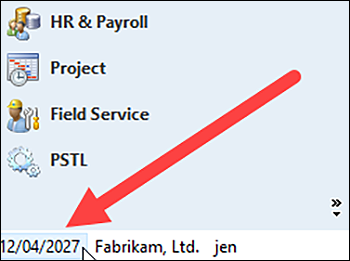
Quick Date Changes: Too often I see users typing the entire date out including slashes! You don’t need to type in the slashes!
- If you’re working in the same MONTH and YEAR, you only need to type in the DAY and the date field will default to the proper date. In my example above, I’m on Fabrikam time, April 12, 2027 (& my system date format is DD/MM/YYYY). If I type in “22”, I will get 22/04/2027.
- If you’re working in the same YEAR but not the same month, type in the DAY and MONTH and the year will default. If I type in “1503”, I will get 15/03/2027.
- These examples are based on a DD/MM/YYYY format so if you have MM/DD/YYYY, then the same tip would require you to type in “0315”.
Navigating the Date Lookup: If you’re a mouse person, here are some tips to quickly navigate when you’re changing multiple months away from your current User Date. Please don’t click on the arrows to change back 8 months every time!
Click on the Date box and you get this pop-up, the current month.
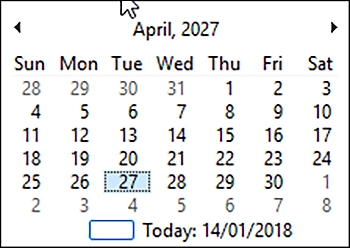
Click on the ‘Month, Year” area and you get the current year, by month, to quickly jump back several months in only 2 clicks!
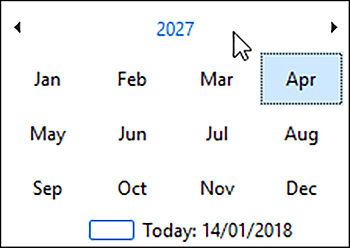
Click on the Year and you’ll jump back to the current decade.
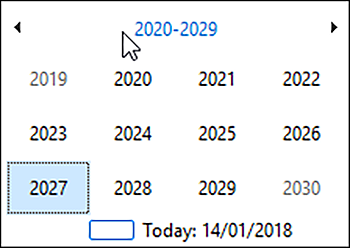
And it gets even better, although at this point you’re likely not entering transactions back this far! Click on the decade and you get the current century.
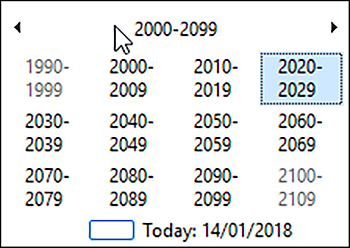
AP, AR, SO, PO Dates & More
Here’s a list of the dates relating to Payables Management, Receivables Management, Sales Order Processing, Purchase Order Processing, Bank Reconciliation, and General Ledger.
- Document Date or Date: The sub ledger date. For most companies this is the actual date on the invoice that they receive from a vendor or send to a customer. In the Bank Reconciliation module this date is called Transaction Date or TRX Date.
- Posting Date or GL Posting Date: The date the transaction will post to the General Ledger and which determines when the transaction will show up on your financial statements. This becomes the Transaction Date in the General Ledger.
- General Ledger Transaction Date: The date that determines the period the transaction will show up for on your financial statements. This is the same as the Posting Date or GL Posting Date that is found in the sub ledgers.
- Posted Date: The date the transaction was actually posted. This will be the system date.
- Apply Date: The sub ledger apply date. This will be used when running aging reports using the Document Date and will be the sub ledger date for any transactions created during the apply process. This will also be used for the Date Invoice Paid Off.
- Apply Posting Date: The General Ledger apply date. Will be used when running aging reports using the GL Posting Date and will be the General Ledger Transaction Date for any transactions created during the apply process.
- Date Invoice paid off: The date an invoice was fully applied (using the Apply Date).
If you have questions or need some assistance, visit our support page for more help.
Don’t forget to subscribe to our blog for more useful tips, tricks, and shortcuts for Microsoft Dynamics GP.
